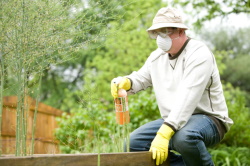Introduction
Every moms and dad's headache is the thought of their newborn encountering a vital emergency. Understanding cardiopulmonary resuscitation (CPR) strategies particularly tailored for newborns can be the distinction in between life and fatality in such situations. Yet, several moms and dads are uninformed of the one-of-a-kind protocols involved in carrying out CPR on babies. This extensive guide aims to equip every parent with essential understanding and skills relating to CPR on newborns, diving right into one-of-a-kind methods that can conserve lives.
CPR on Babies: Unique Strategies Every Moms And Dad Ought To Know
Cardiopulmonary resuscitation (CPR) is a lifesaving method utilized in emergencies when somebody's breathing or heartbeat has actually stopped. While lots of people are familiar with grown-up CPR, the methods vary dramatically when it comes to infants. The fragile nature of a newborn calls for particular methods that differ from those used on older youngsters and adults.
Understanding Newborn Anatomy and Physiology
Before delving right into CPR strategies, it's vital to recognize the makeup and physiology of a newborn. Newborns have smaller sized lungs, fragile ribs, and a various circulatory system than adults. Recognizing these distinctions can assist parents perform CPR more effectively.


The Relevance of Air passage Management
Newborns' respiratory tracts are smaller sized and extra prone to obstruction; therefore, airway management is important during an emergency situation. Parents need to learn just how to appropriately get rid of an airway to make sure efficient breathing restoration.
Recognizing When to Do CPR
More helpful hintsOne of the initial steps in any kind of emergency is identifying when CPR is essential:
- Unresponsiveness: If your child isn't responding or moving. No Breathing: If your baby isn't taking a breath normally or at all. Abnormal Skin Color: A bluish color around lips or face indicates absence of oxygen.
Initial Assessment: The DRSABCD Approach
The DRSABCD technique is crucial for evaluating any emergency circumstance:
D - Danger: Ensure the setting is safe. R - Response: Inspect if the baby reacts by carefully trembling them. S - Send for Help: Ask for emergency help if needed. A - Airway: Open up the respiratory tract by turning the head back gently. B - Breathing: Seek indicators of breathing. C - Compression: If no breathing is identified, commence CPR. D - Defibrillation: Use an AED if readily available and trained to do so.The Steps to Do Infant CPR
Performing CPR on a newborn varies considerably from adults because of their size and frailty:
1. Positioning
Lay the infant on their back on a firm surface.
2. Opening Airway
Gently tilt the head back a little to open up the air passage while guaranteeing not to exhaust it.
3. Check Breathing
Look for breast motions and listen for breath appears for around 10 seconds.
4. Chest Compressions
Using two fingers placed simply below the nipple area line, push down roughly 1/3 deepness of their chest (about 1-1.5 inches) at a price of 100-120 compressions per minute.
5. Rescue Breaths
After every 30 compressions, provide two gentle rescue breaths:
- Seal your lips around their mouth and nose, Deliver each breath over one secondly while observing for chest surge, Repeat till you see indications of life or aid arrives.
Common Blunders During Baby CPR
Even sympathetic efforts might fail due to common mistakes:
- Applying way too much pressure during compressions can cause injury. Failing to make sure appropriate head tilt might obstruct airflow. Not requiring aid early sufficient can postpone important care.
Mental Preparation for Emergencies
It's natural to really feel panic in emergency situations; nonetheless, mental prep work plays a crucial role in properly carrying out first aid actions:
- Remain calmness; panicking prevents clear thinking. Practice mindfulness strategies before going into parenthood.
FAQs About CPR on Newborns
What needs to I do if my newborn quits breathing?
If your newborn quits breathing, swiftly examine their responsiveness, phone call for help, examine their airway, and course for cpr start CPR as detailed above.
How commonly needs to I take first aid courses?
It's suggested that moms and dads rejuvenate their expertise every 2 years by taking first aid training courses or details baby CPR training sessions.
Can I make use of an AED on an infant?
Generally speaking, AEDs are not suggested for infants under one year old unless particularly made for such usage; constantly comply with manufacturer's instructions.
Where can I locate first aid programs near me?
You can browse online making use of terms like "first aid training course near me" or inspect regional health centers or community centers that commonly supply these courses regularly.
How long does a first aid accreditation last?
Typically, a lot of first aid accreditations stay legitimate for 3 years prior to calling for revival via refresher courses that include updated methods like DRSABCD protocols.

Is it essential to discover mental wellness first aid as well?
Absolutely! Psychological health and wellness first aid gears up moms and dads with abilities required not just in physical emergencies but likewise in identifying psychological distress amongst children and adolescents.
Conclusion
Understanding "CPR on Newborns: Distinct Strategies Every Moms And Dad Should Know" isn't merely concerning getting technological skills; it's about empowering yourself as a caregiver prepared to encounter unanticipated challenges head-on. Whether through devoted training programs like those offered by various companies or practicing hands-on strategies with member of the family during workshops-- every initiative counts in the direction of constructing confidence in your ability to respond Helpful hints effectively throughout emergency situations entailing your valuable newborns.
Incorporating this knowledge into your parenting toolkit might imply conserving lives when it matters most. So why wait? Register today for courses such as "first aid program," "cpr training," or specialized "baby first aid course" alternatives offered close by-- you never ever understand when you could require them!